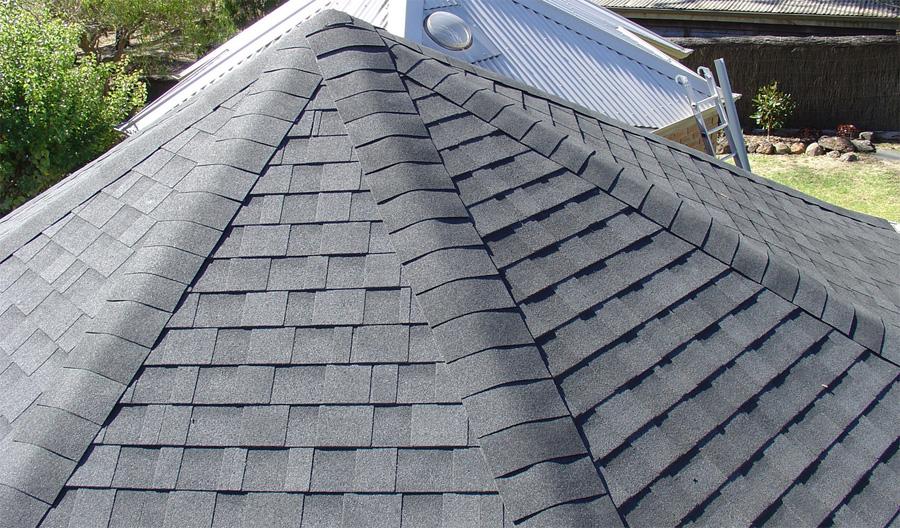Average Life of an Asphalt Shingle Roof. Discover the longevity of asphalt shingle roofs and how various factors impact their lifespan. Learn about maintenance tips, signs of wear, and when replacement may be necessary.

Average Life Of An Asphalt Shingle Roof
Understanding the average life expectancy of an asphalt shingle roof is essential for homeowners looking to maximize their investment in roofing materials. Here’s a detailed exploration of what determines how long an asphalt shingle roof lasts and how to extend its lifespan.
Factors Influencing Asphalt Shingle Roof Longevity
Quality of Materials
The quality of asphalt shingles significantly affects their lifespan. High-quality shingles made from durable materials and reinforced with additives like fiberglass typically last longer than basic organic shingles.
Read too: Is It Reasonable to Ask the Seller to Replace the Roof?
Climate and Weather Conditions
Weather conditions play a crucial role in the wear and tear of asphalt shingle roofs. Exposure to extreme heat, UV radiation, heavy rain, snow, and hail can accelerate deterioration. Roofs in regions with harsh climates may experience shorter lifespans compared to those in milder climates.
Installation Quality
Proper installation by experienced roofing contractors is vital for the longevity of asphalt shingle roofs. Incorrect installation techniques or shortcuts can lead to premature roof failure, leaks, and other issues that shorten the roof’s lifespan.
Roof Pitch and Orientation
The pitch or slope of the roof affects how quickly water drains off the surface. Steeper roofs typically shed water more efficiently, reducing the risk of moisture damage and extending the life of asphalt shingles. Additionally, the orientation of the roof relative to the sun and prevailing winds can impact exposure and wear.
Average Lifespan of Different Types of Asphalt Shingles
Three-Tab Shingles
Traditional three-tab asphalt shingles, while cost-effective, typically have a shorter lifespan of around 15 to 20 years. They are susceptible to wind damage and may degrade faster under severe weather conditions.
Architectural Shingles
Architectural or dimensional shingles are thicker and more durable than three-tab shingles. They often have a lifespan of 25 to 30 years or more, depending on the quality of materials and installation.
Impact-Resistant Shingles
Impact-resistant asphalt shingles are designed to withstand hail and debris impact better than standard shingles. They can last 30 years or longer in regions prone to severe weather events.
Signs Your Asphalt Shingle Roof Needs Attention
Curling and Buckling
Visible signs of curling or buckling shingles indicate weathering and potential moisture damage. These issues compromise the roof’s ability to shed water and protect your home.
Missing or Damaged Shingles
Missing or damaged shingles expose the roof underlayment and substrate to water infiltration, leading to leaks and structural damage if left unaddressed.
Granule Loss
Granule loss on shingles is normal over time but excessive granule loss indicates aging and reduced protection against UV rays. Inspect gutters for granule buildup, which may signal roof deterioration.
Moss or Algae Growth
Moss, algae, or fungal growth on shingles can indicate moisture retention issues and potential roof decay. Address these growths promptly to prevent further damage.
Extending the Life of Your Asphalt Shingle Roof
Regular Inspections and Maintenance
Schedule annual roof inspections by a qualified roofing contractor to assess the condition of shingles, flashing, and seals. Promptly repair any damage and replace worn-out shingles to prevent leaks and prolong roof life.
Clearing Debris and Maintaining Gutters
Keep gutters and downspouts clear of debris to ensure proper drainage. Clogged gutters can cause water backup under shingles, leading to rot and deterioration.
Roof Ventilation
Proper attic ventilation helps regulate temperature and humidity levels in the attic space, reducing heat buildup that can prematurely age shingles.
When to Consider Roof Replacement
Age of the Roof
Asphalt shingle roofs nearing the end of their expected lifespan may require replacement to avoid unexpected failures and costly repairs.
Extensive Damage
Significant storm damage, extensive leaks, or widespread shingle deterioration may necessitate roof replacement rather than repairs.
Energy Efficiency Upgrades
Upgrading to energy-efficient shingles or materials can improve home insulation and reduce energy costs, making replacement a worthwhile investment.
Conclusion
In conclusion, understanding the average life expectancy of an asphalt shingle roof empowers homeowners to make informed decisions about maintenance and replacement. By considering quality, climate, installation, and maintenance practices, you can maximize the lifespan of your roof and protect your home effectively.
Regular inspections, prompt repairs, and proactive maintenance are key to preserving the integrity of your asphalt shingle roof. Consult with a reputable roofing contractor for personalized advice on extending the life of your roof and ensuring continued protection for years to come.



Leave a Reply